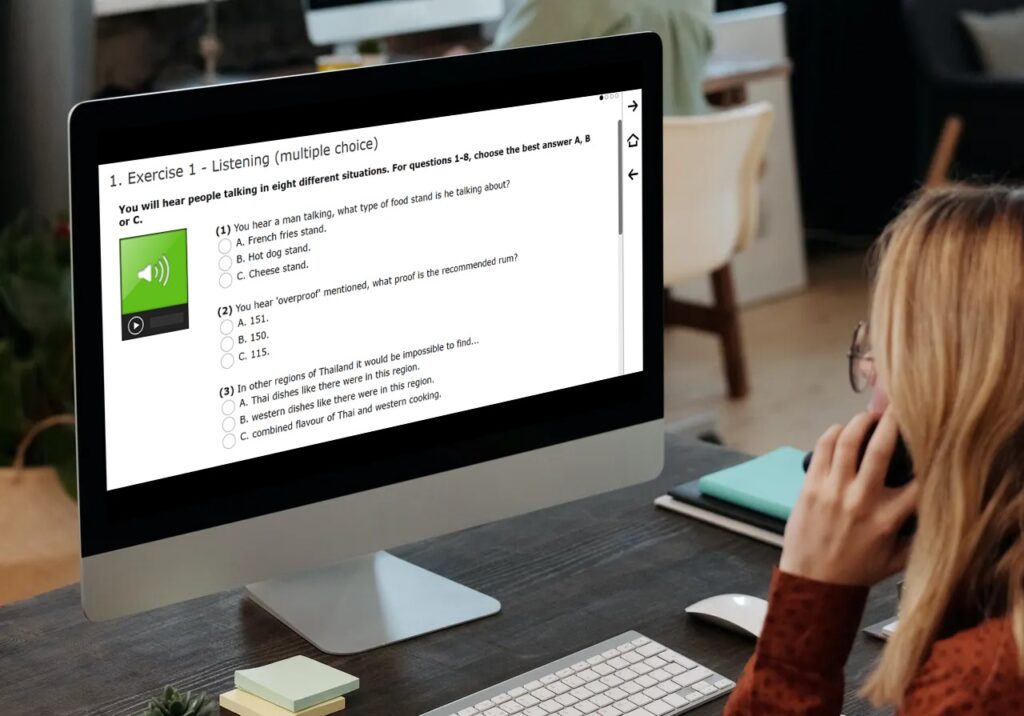Creating content with SCORM format allows you to create content that can be imported into different learning management systems, if they support the SCORM standard.
What is the SCORM format?
SCORM format is an acronym formed by “Sharable Content Object Reference Model”, a set of standards and specifications that allows creating structured pedagogical objects.
The contents that have this format follow the following requirements: Interoperability, reusability, manageability, accessibility, durability, scalability and cost effectiveness.
7 features of the SCORM format

# 1 SCORM format follows interoperability
Do you think that a learning management system or LMS can display and manage the content created for another platform? Interoperability offers the possibility to display content in SCORM format regardless of how it was created and produce content regardless of the platform on which it will be incorporated. The contents with this format follow the requirement of interoperability, which facilitates the production of content to generate courses that can be installed on any platform.
# 2 It is reusable
Reusability is another characteristic of the SCORM format. It reduces production times and increases the quality of content. Instead of starting from scratch, the reusability of this format allows us to reuse what already exists and, if necessary, to improve it. That is, an elearning content can be used again in another course or in another context without problem, if that content follows the format. You can also create a course on your LMS or platform by combining components created for other platforms.
# 3 SCORM format is manageable
Thanks to the manageability of the SCORM format, your learning management platform can record the activity between the user and the content. The tutor or manager can know and see firsthand which students are participating in the course and how often, what has been the result of the evaluation, etc. This format is the best solution to be able to track a class or a large group of students at a glance. Moreover, through this format, the tutor or teacher can know the name of the students who are reading the elearning course lesson, if it is the first time they have read it or if they have been more times in that same lesson. These properties are achieved by defining a standard communication between the platform and the contents.
# 4 It grants accessibility
The accessibility of SCORM format allows users to access the appropriate content at the right time and from where they are. The content of the elearning course is always accessible from any device and can be accessed whenever you want, thus being able to advance in the subject at your own pace.
# 5 SCORM format has durability
Thanks to durability, the content is capable of supporting the technologies that will be used in the future for the development of content and platforms, since this principle is intended to prevent technological obsolescence of SCORM format content.
# 6 SCORM format is scalable
The property of the scalability of the contents allows creating more content, more materials, and more variety in a simple and independent way from the platform. In addition, the platform can expand its functionalities, the number of courses published and the number of users supported, independently of the structure of the courses. That is, scalability allows a 100% return on investment in e-learning.
# 7 SCORM format has cost effectiveness
The latter is not so much a property of SCORM content but a benefit derived from the principles described above. This additional benefit is the reduction of costs. Among other things, the contents with this format facilitates access anywhere, anytime, from any device.
It can also save travel and mobilization costs and teachers time, which allows them and students to efficiently manage their study time and schedule. Apart from all this cost reduction, the improvement of student learning should also be taken into account, as it reduces the learning time and the production costs of those contents.
If you want to read more about our SCORM content in languages and information technology, you can find out more here.
You may also like:
- Main e-learning modalities
- LMS, The Advantages eLearning Professionals Need To Know
- Benefits of flipped classroom

